When you think of “easy raised beds,” you probably think of using pressure treated wood and a miter saw. That’s the way I used to make my garden beds in spring. A hurried trip to Home Depot or Lowes, then a few hours of measuring and cutting and nailing and placing beds. It’s fun, and it looks cool when you’re done.
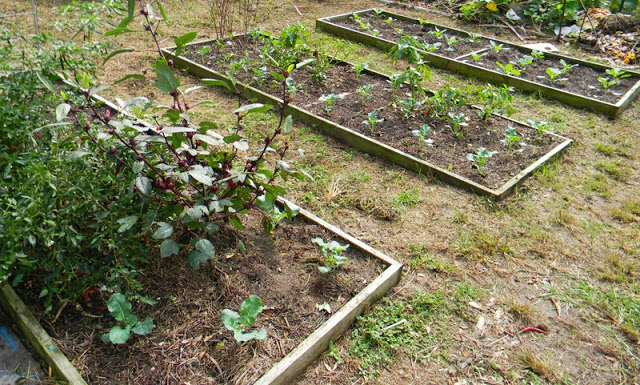
But then people tell you, “wait! Pressure treated lumber is bad for you!” So you start looking around and you find a good supply of cinder blocks. Hey, they may not look classy, but why not? They’ll last forever!
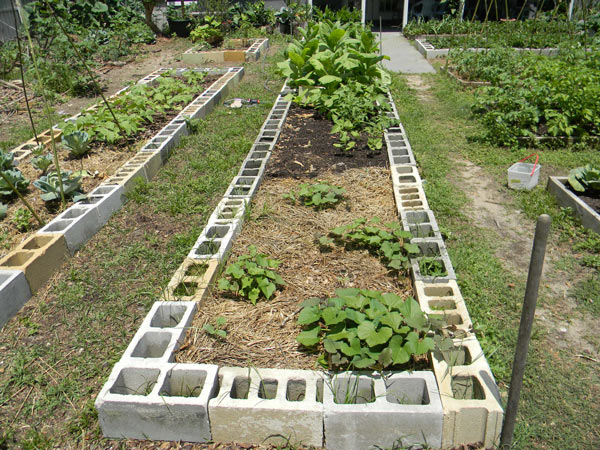
Or maybe the cinder block raised beds look too ugly for you. Then you use solid blocks to make it look nice:
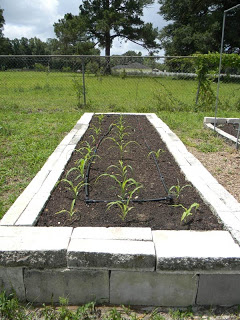
Or you go really crazy and mosaic the top!
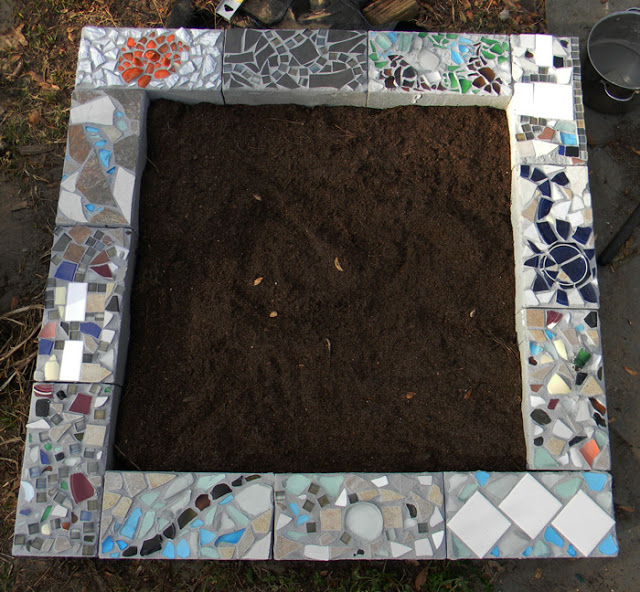
That looks awesome – but it takes a long time.
And hauling cinder blocks is really a pain in the neck, as is leveling the ground so they don’t go all tumbly-bumbly on you.
And then someone says, “don’t you know cinder blocks can leach toxins into the soil?”
Wait – what? Do they? Or just alkalinity? Oh no!
So you say, “okay, I’m going with cedar next time!”
And you take a trip to the store and discover that buying cedar for your garden beds is roughly equivalent to burning stacks of $100 bills to keep warm.
It’s expensive! And you also need to deal with building the beds.
So the spring gardens wait for you to get around to making your beds. Or maybe you’re waiting on your husband to make them. Or for your brother to lend you his saw.
Meanwhile, if you go with my favorite easy raised bed style, you could have been all planted long ago.
Easy Raised Beds the Biointensive Way
I have built beds with wood, cinder blocks, stones, bricks, bamboo and even bottles.
Generally, though, I now stick to a modified version of the easy raised bed design recommended by John Jeavons.
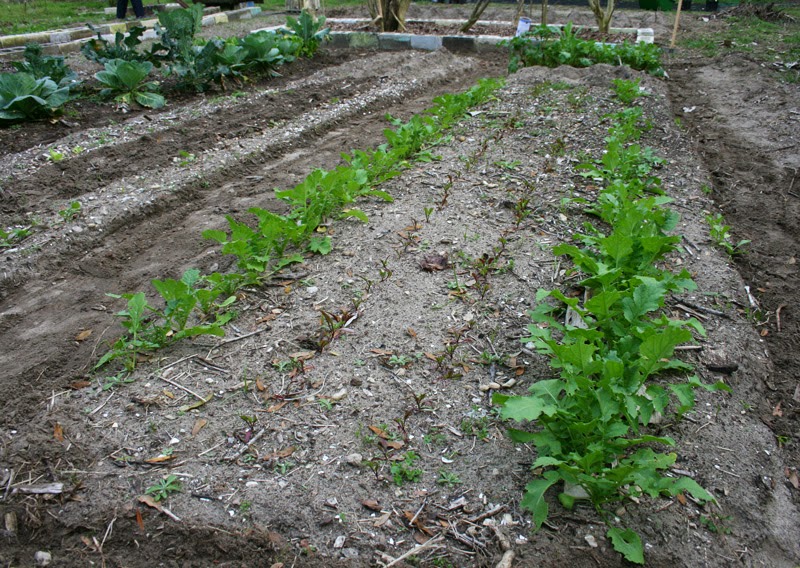
No borders, just a nice section of well-dug earth which you DON’T step on after digging. That ground will stay loose for a long time. I’ve planted on year-old double-dug beds and they were still nice and loose.
Jeavons recommends double-digging 5′ wide beds with a fork and a spade, like this:
My Modifications
This system works well, but there are a few things I changed for my own gardening.
First, the spacing!
I prefer wide spacing to tight spacing, especially in situations where I need to haul water.
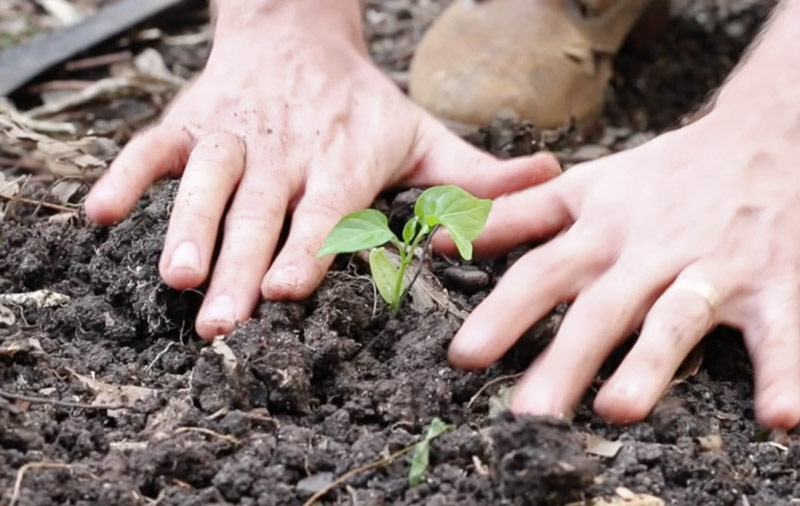
Give them some room and they’ll compete less. Tighter spacing creates a need for more water and much higher soil fertility. Widely spaced plants are better at taking care of themselves.
Second, the width.
The theory with 5′ wide beds is that they create a microclimate as the plants grow together and the leaves touch. I don’t know about that as I haven’t tested it; however, 4′ beds have worked fine for me. Even 3′ beds are great. 5′ is too much to reach over and just feels clunky.
Here are some small ones:
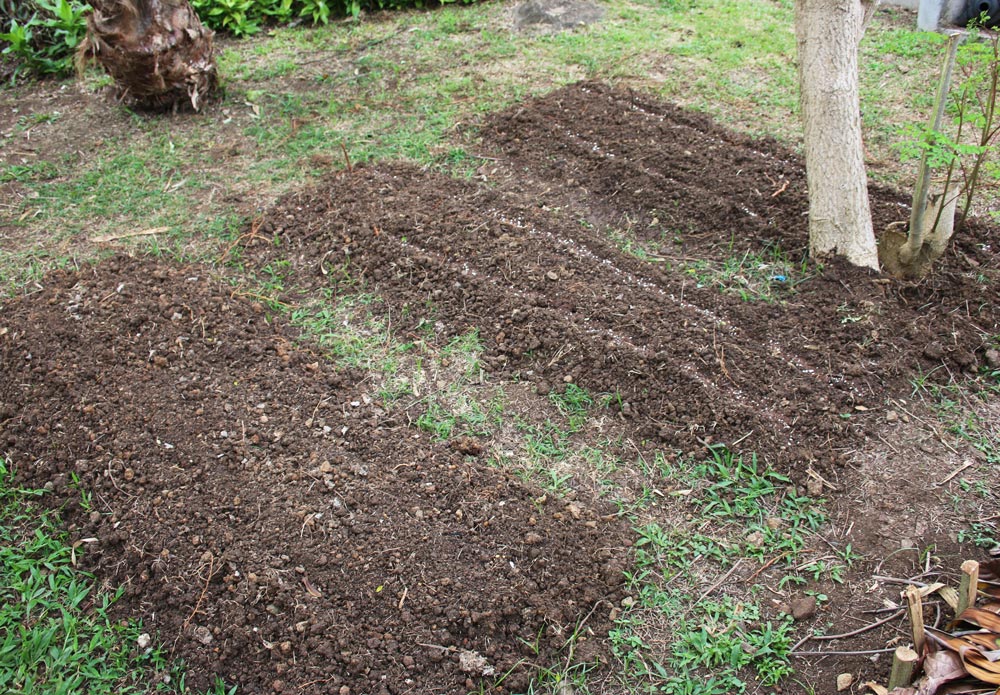
And some wider ones:
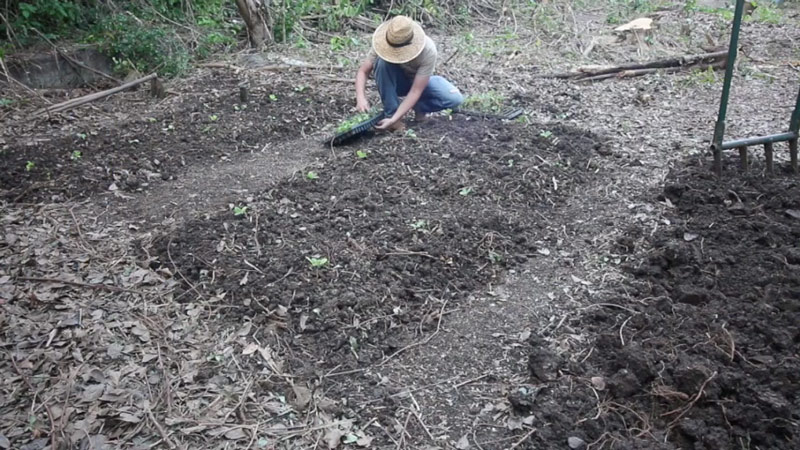
Those might be nearing 5′ wide, actually, but 4′ is easier to handle.
Third, the tools!
Instead of double digging with a spade and fork, I now do most of my digging with my Meadow Creature broadfork:
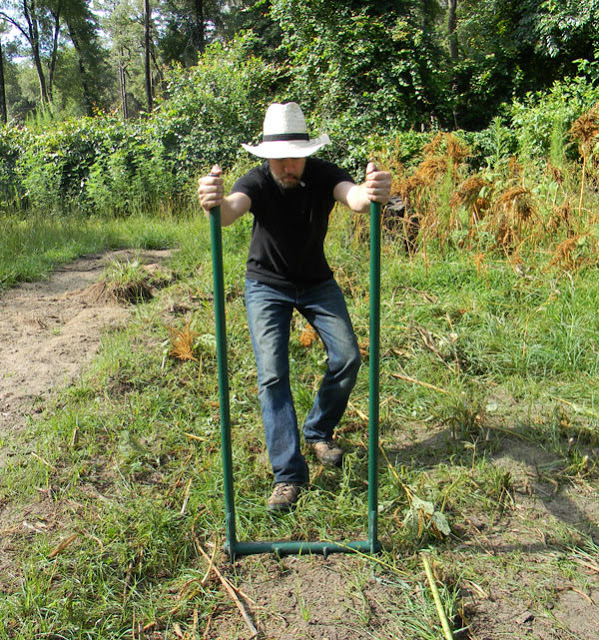
-and the triangular hoe I got from Easy Digging.
![]() The broadfork doesn’t break ground as thoroughly as a fork and spade but you can go a lot faster and cover much larger gardens without breaking your back.
The broadfork doesn’t break ground as thoroughly as a fork and spade but you can go a lot faster and cover much larger gardens without breaking your back.
It’s a much easier tool to use and is rather like rowing. It feels good to broadfork – much more so than digging with a spade.
Once I have my bed loosened, I shape it up with the triangular hoe. If I want it really neat, I’ll also use a rake to level the seedbed.
In between beds I like 3′ paths. Less than that and you’re always crowded. Our old homestead had beds with less than 2′ between beds.
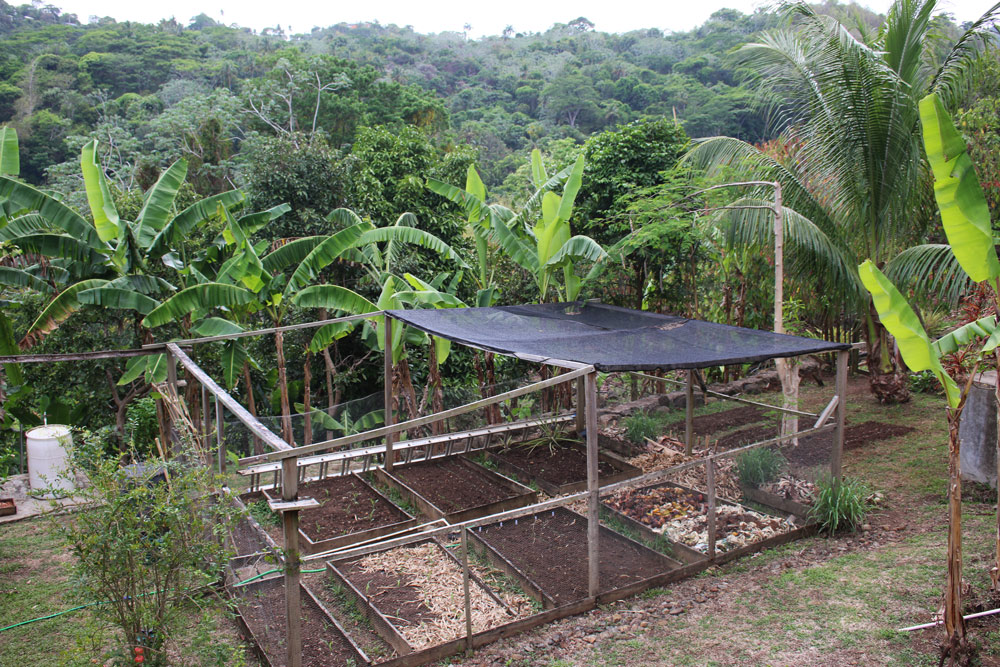
That saves on space but it’s harder to work and feels claustrophobic. Spread out!
Conclusion
I’ve found that a simple 4′ x 8′ raised bed mound like these can be built in perhaps a half-hour. The ones I’m making now are taking longer as I’m pulling out rocks and roots, but if you were working in a lawn they’d be done in no time flat.
Here’s my new video looking at this method so you can really get a look at what I’m doing:
The plants love these beds just as much as beds with borders. Why make cedar raised beds or square foot garden beds with pressure treated lumber when you can just dig mounded beds like these? It’s so easy – and I find these easy raised beds are better when it comes to weeding as well. There’s no wood for the weeds to work themselves in around.
If you’re looking to try something new in your spring gardening and haven’t built this style of mounded bed before, I encourage you to give it a try. This is about the easiest garden you can make and it’s free. I don’t see the need to spend money on borders anymore. I just make neat mound gardens and plant them up. The vegetables make them beautiful.
I’ll be digging more over the coming weeks as we get ready for spring. Be sure to subscribe to my YouTube channel so you can follow along as I post new videos.
But for now, get out there and get digging!
Resources:
John Jeavons’ book: http://amzn.to/2oW8Ou1
Meadow Creature Broadfork: https://meadowcreature.com/
EasyDigging: https://www.easydigging.com/

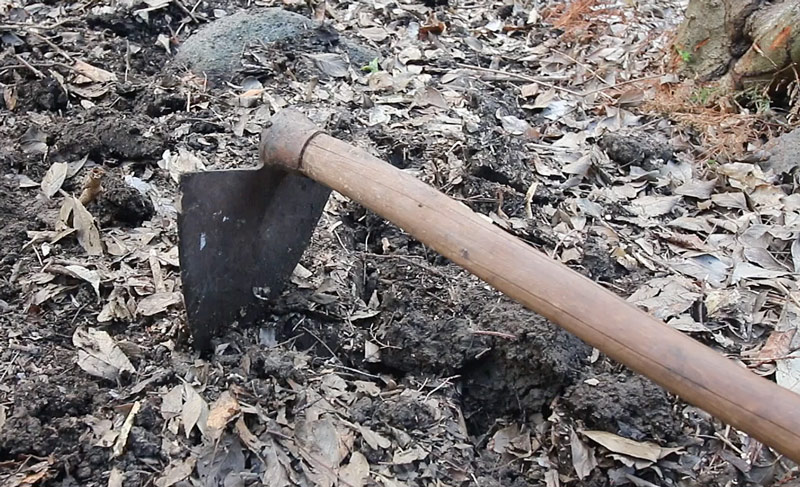
4 comments
Yes, but . . . what about the gophers? I love your idea, but the gophers eat everything in our garden boxes unless the box is lined with chicken wire on the bottom to keep them out. Any ideas for that? :)
Gophers! Oh no. I used to have moles.
I wish I had a good answer for you. Perhaps another reader can pitch in here? Anyone have an idea on gopher protection?
Our neighbor’s cat keep groundhogs, rabbits, and moles away. I saw the cat catch a mole once. The down side to fewer moles, more grubs in the lawn. It is a trade off.
While not double digging, I have been making raised beds of sorts for a few years, by making paths and throwing the dirt I dug out of them into the areas where I intended to grow things. I never thought of it as a gardening method, but rather a way to define the space and keep myself, a born klutz, from compacting the growing spaces and stepping on the vegetable plants.
I agree that narrower beds are easier to work with, and find that with anything wider than three feet, I cannot comfortably reach the center to pull weeds.
I am less sure about the benefits of leaving a lot of space around your plants. I know that more plants in a small area would draw more nutrients from the soil, that would need to be replenished. One solution might be companion planting, mixing vegetables with different nutritional requirements in the same bed, and then of course adding plenty of compost before the next growing season.
As for watering, water evaporates much more quickly from bare ground than from ground covered in vegetation. Plants growing wild in nature, which we often refer to as weeds, are usually pretty tightly spaced, and seem to do fine.
Comments are closed.